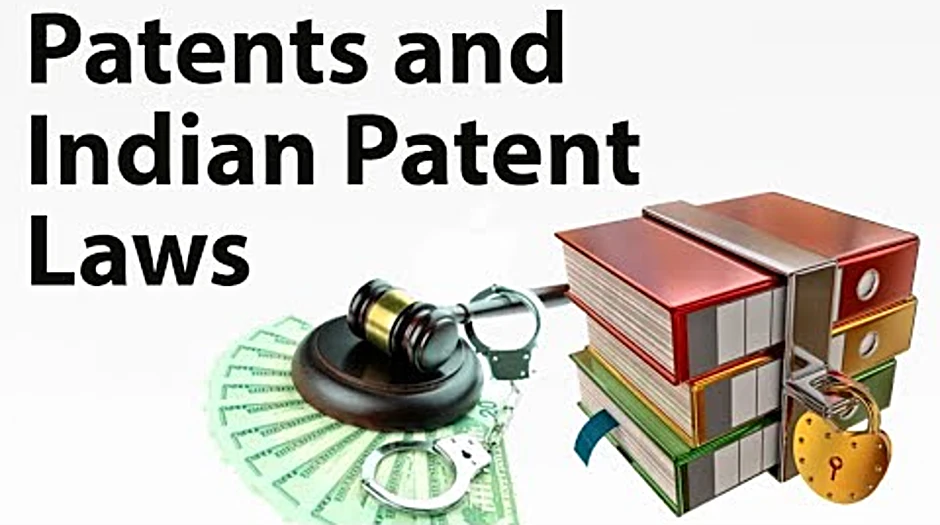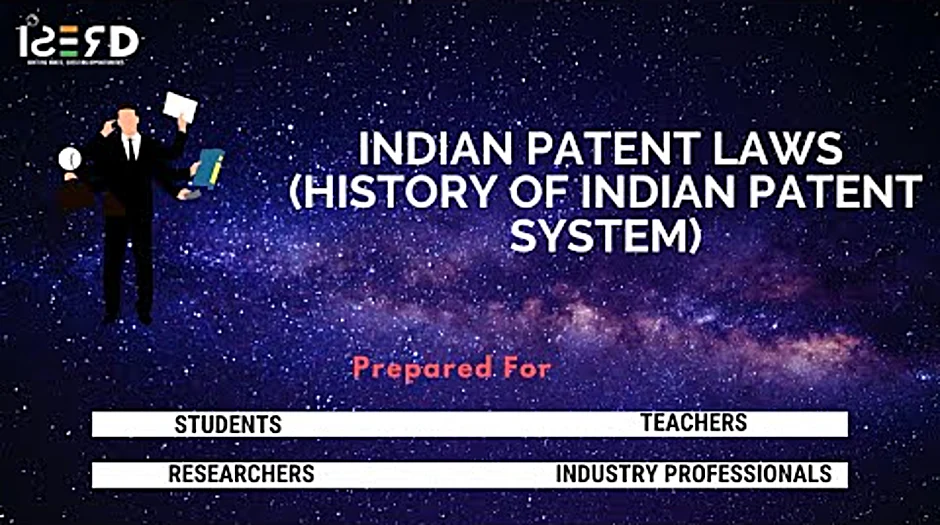History of indian patent law [Glossary]
Table of Contents
- What is the history of the patent law?
- Does India have patent law?
- When was the first patent granted?
- What are the 3 types of patents?
- What are the objectives and scope of Indian patent law?
- Why is it called a patent?
- What was the first patent number?
- Who grants IPR in India?
- What are the 4 types of patents?
- What are the 5 requirements of a patent?
- What are the important features of the Indian patent act?
- Which was the first patent of India?
- Who filed most patents in India?
- When did patent start in India?
- What is Indian patent law?
- Who got the first patent?
- What does patent mean in history?
- What is Indian patent Act 1970?
- How many patents are there in India?
- How long is patent valid in India?
Last updated : Aug 25, 2022
Written by : Felecia Difilippo |
Current |
Write a comment |
What is the history of the patent law?
The history of Patent law in India starts from 1911 when the Indian Patents and Designs Act, 1911 was enacted. The present Patents Act, 1970 came into force in the year 1972, amending and consolidating the existing law relating to Patents in India.
Which was the first patent of India?
On 3 March 1856, a civil engineer, George Alfred DePenning of 7, Grant's Lane, Calcutta petitioned the Government of India for grant of exclusive privileges for his invention — "An Efficient Punkah Pulling Machine".
When did patent start in India?
The first legislation in India relating to patents was the Act VI of 1856. The objective of this legislation was to encourage inventions of new and useful manufactures and to induce inventors to disclose secret of their inventions.
What is Indian patent law?
Under this law, patent rights are granted for inventions covering a new and inventive process, product or an article of manufacture that are able to satisfy the patent eligibility requirements of having novelty, inventive steps, and are capable of industrial application.
Who got the first patent?
The first recorded patent for an industrial invention was granted in 1421 in Florence to the architect and engineer Filippo Brunelleschi. The patent gave him a three-year monopoly on the manufacture of a barge with hoisting gear used to transport marble.
What does patent mean in history?
A patent is an exclusive right granted for an invention, which is a product or a process that provides, in general, a new way of doing something, or offers a new technical solution to a problem. To get a patent, technical information about the invention must be disclosed to the public in a patent application.
What is Indian patent Act 1970?
The Patents Act 1970 had a very limited scope of protection wherein the essential elements of invention were new, useful and manner of manufacture. Even though manufacture was not defined in the old Act, the Patent Office established the practice of interpreting manufacture as process resulting in a tangible product.
How many patents are there in India?
The cornerstone laid down by National IPR policy and the efforts made by the Government has transpired into the following achievements for India: Filing of patents have increased from 42763 in 2014-15 to 66440 in 2021-22, more that 50% increase in a span of 7 years.
How long is patent valid in India?
Patent protection is granted for a limited period, generally 20 years from the filing date of the application. Is a patent valid in every country?
Does India have patent law?
Indian patents are governed by the Indian Patent Act of 1970. Under the act, patents are granted if the invention fulfils the following criteria: It should be novel. It should have inventive step/s or it must be non-obvious.
When was the first patent granted?
July 31, 1790 Issued to Samuel Hopkins for a process of making potash, an ingredient used in fertilizer. President George Washington signed the first patent.
What are the 3 types of patents?
What kind of patent do you need? There are three types of patents - Utility, Design, and Plant. Utility patents may be granted to anyone who invents or discovers any new and useful process, machine, article of manufacture, or compositions of matters, or any new useful improvement thereof.
What are the objectives and scope of Indian patent law?
The primary objective for enacting patent law is to encourage inventors to make a greater contribution to their field by granting them exclusive rights to their inventions. In India, an innovation referring to a new product or procedure that involves the inventive phase and is capable of industrial use can be patented.
Why is it called a patent?
The word patent originates from the Latin patere, which means "to lay open" (i.e., to make available for public inspection).
What was the first patent number?
The first US Patent, numbered X000001 (pictured right), was granted on July 31, 1790. The patent was granted by President George Washington. The patent was granted to Samuel Hopkins, in Pittsford, Vermont, for the "making of pot ash and pearl ash by a new apparatus and process".
Who grants IPR in India?
Authority. The Intellectual Property India is administered by the Office of the Controller General of Patents, Designs & Trade Marks (CGPDTM). This is a subordinate office of the Government of India and administers the Indian law of Patents, Designs, Trade Marks and Geographical Indications.
What are the 4 types of patents?
- Utility patent. This is what most people think of when they think about a patent.
- Provisional patent.
- Design patent.
- Plant patent.
What are the 5 requirements of a patent?
- The innovation is patentable subject matter. Patentable.
- The innovation is new (called 'novelty')
- The innovation is inventive.
- The innovation is useful (called 'utility')
- The innovation must not have prior use.
What are the important features of the Indian patent act?
- Both product and process patent provided.
- Term of patent – 20 years.
- Examination on request.
- Both pre-grant and post-grant opposition.
- Fast track mechanism for disposal of appeals.
- Provision for protection of bio-diversity and traditional knowledge.
Who filed most patents in India?
Gurtej Singh Sandhu has the most patents by any person based in India. Gurtej has 1375 patents and works at Micron. The second person from India is Sarbajit Kumar Rakshit with 753 patents.

Check these related keywords for more interesting articles :
Can you trademark a person
What are the invention for the purpose of patent act 1970
Trademark registration passing off
How to patent trademark
How to copyright a name brand
How to remove copyright from wordpress theme
Can you trademark a url
Intellectual property examples situation
How to do design patent search
Can you copyright a movie
What happens if you trademark a name can someone else use it
How to check patent in us
Registered trademark geographical indication
Trademark filing guidelines
How to protect product without patent
Did you find this article relevant to what you were looking for?
Write a comment
Comment by Julieann Bodkin
Thanks for this great article
Thanks for your comment Julieann Bodkin, have a nice day.
- Felecia Difilippo, Staff Member
Comment by Kacey
[Applause] hello and welcome to study IQ in this session let us see what is a patent and what is the Indian baton low so paitent and Indian baton low pay dent and Indian patent low first let us see what is a patent when we talk about baton three important things have to be noted so the first thing is that patron is an intellectual property right given for inventions inventions that is the first thing to be noted so it is given for inventions the second thing to be noted is that patent is for a particular period of time that this baton is for 20 years so granting of patent is for 20 years so there is a time period for the granting of patent so after this 20 years that is this 20 years is known as the protective period of the patent so after this protective period the baton becomes a off patent so after 20 years the patron becomes off patent the word off patent or off patent means that anybody can use this patented product after a period of 20 years so after the 20 years or after the 20 years of the protective period the baton is open to the general public anybody can use this patent anybody can use this technology or the invention to make the production or make the produce so after 20 years the paetynn becomes off patent and it is open to the general public for production the third thing to be noted is that according to the TRIPS Agreement every member country has to shift from process patent to product patent so from process painted the every member country has to shift from process patent to product patent that is product patent before we discuss about product phaeton and process page and let us see what is the history of patent in India history of patent law in India history of patent law in India the first patent law in the country was passed in the year 1911 in the year 1911 the fur paetynn lowers past in our country and it was passed by the British government so the British government British government the British government passed the patent law in India in the year 1911 like all of the laws passed by the British government this slowed the baton Louis also aimed at maximizing the profit of the British companies so the aim was to maximize maximize the profit of the profit of British companies companies the aim of the slovers to maximize the profit of the British companies so with this path and the British companies charge higher prices for their products the British companies charged charged higher prices higher prices for their products and this higher prices helped them to earn maximum profit for those firms an important thing to be noted under the British patent law is that it was a product peasant not the process patent it was a product patent not a process patent so this is very important it was a product phaeton you will understand why this is important when we discuss about product patent and process patent so the British passed the first patent law in the country in the year 1911 and this was a product stated the aim of this Louis to maximize the profit of the British companies by charging higher prices for their commodities in the year of 1970 the Indian Patent Act was passed in the year 1970 the Indian Patent Act Indian Patent Act was passed this is very very important you must clearly understand what does the Indian Patent Act this is very important so let us see what is the Indian Patent Act under the Indian baton that the government allowed for process patent also along with product patents so along with along with product patent process patent was also allowed process patent verse also allowed and this process patent was allowed especially in the and pharmaceutical sector allowed especially in food and pharmaceutical sector from silicon sector and this allowed the pharmaceutical companies to produce the drugs at a cheaper price so this allowed the pharmaceutical companies to produce their drugs a cheaper price so the drugs were produced at cheaper price if you notice we will see that from the UM 1970 that is the year when we passed the Indian Patent Act from the Year 1970 to the next 20 years that is the patent is for 20 years for the next 20 years we have seen we have seen a tremendous improvement in the production of drugs especially general drugs in the country so for the 20 years we will see a tremendous improvement in the production of generic drugs in the country let us see how it this has happened as we have discussed Payton is for a period of 20 years so after 20 years the Payton becomes off patent so after 20 years it becomes off patent it means that anybody can use the technology or the invention to make their produce so after 20 years it becomes off patent suppose a particular drug was paid ended and after 20 years what will happen it becomes off patent so after 20 years anybody can produce the drug so this will be known as generic drug under general blood the composition will be the same the product will be the same the drug was the same anybody can produce it under different names so it becomes a general drug so this is how India captured the world market of pharmaceuticals so India became one of the largest producers of pharmaceuticals and drugs in the world with this introduction of process patent we were able to sell our drug set cheaper rate so we were we we were able to export the drugs even to us cheaper drugs quality was good so this increased the production of drugs in India and we became one of the largest producers of drugs in the world in short we can say that the in reduction of process patenting was the reason for the growth the pharmaceutical industry in the country again in the year 1995 India join the trade organization so India joined WTO in the year 1995 what was the impact for the Indian intellectual property rights while joining the WTO let us see so under the WTO the member countries had to comply with the TRIPS Agreement the TRIPS Agreement voltage trips trips means trade related intellectual property rights good sis trade related related intellectual intellectual property rights property rights it is a multilateral agreement of the World Trade Organization in relation to the IPR or intellectual property rights so it is a multilateral agreement of WTO relating to the intellectual property rights so under the trips agreement or the trade related intellectual property rights agreement of the WTO every member country had to shift from process patent to product feted so under trips every member country every member country had to shift from process patent process patent to product patent the obligation was that every member country has to shift from the process patent to product patent but for different member countries different time period was given in order to comply with this agreement the developed countries developed countries had to comply with it within a period of one year so for the developed countries the time was one year for the developing countries like India the time was five years so within five years they have to comply with this agreement also unclose was given that in case of any emergency the developing countries can extend this time period of five years to anot
Thanks Kacey your participation is very much appreciated
- Felecia Difilippo
About the author

Felecia Difilippo
I've studied actuarial science at Keuka College in Keuka Park and I am an expert in bookmobile. I usually feel enthralled. My previous job was medical secretary I held this position for 25 years, I love talking about book discussion clubs and languages. Huge fan of Miguel Bezos I practice paintball and collect eggs.
Try Not to laugh !
Joke resides here...
Tags
Does India have patent law
When was the first patent granted
What are the 3 types of patents
What are the objectives and scope of Indian patent law
Why is it called a patent
What was the first patent number
Who grants IPR in India
What are the 4 types of patents
What are the 5 requirements of a patent
What are the important features of the Indian patent act
Which was the first patent of India
Who filed most patents in India
When did patent start in India
What is Indian patent law
Who got the first patent
What does patent mean in history
What is Indian patent Act 1970
How many patents are there in India
How long is patent valid in India
 : 2661
: 2661

